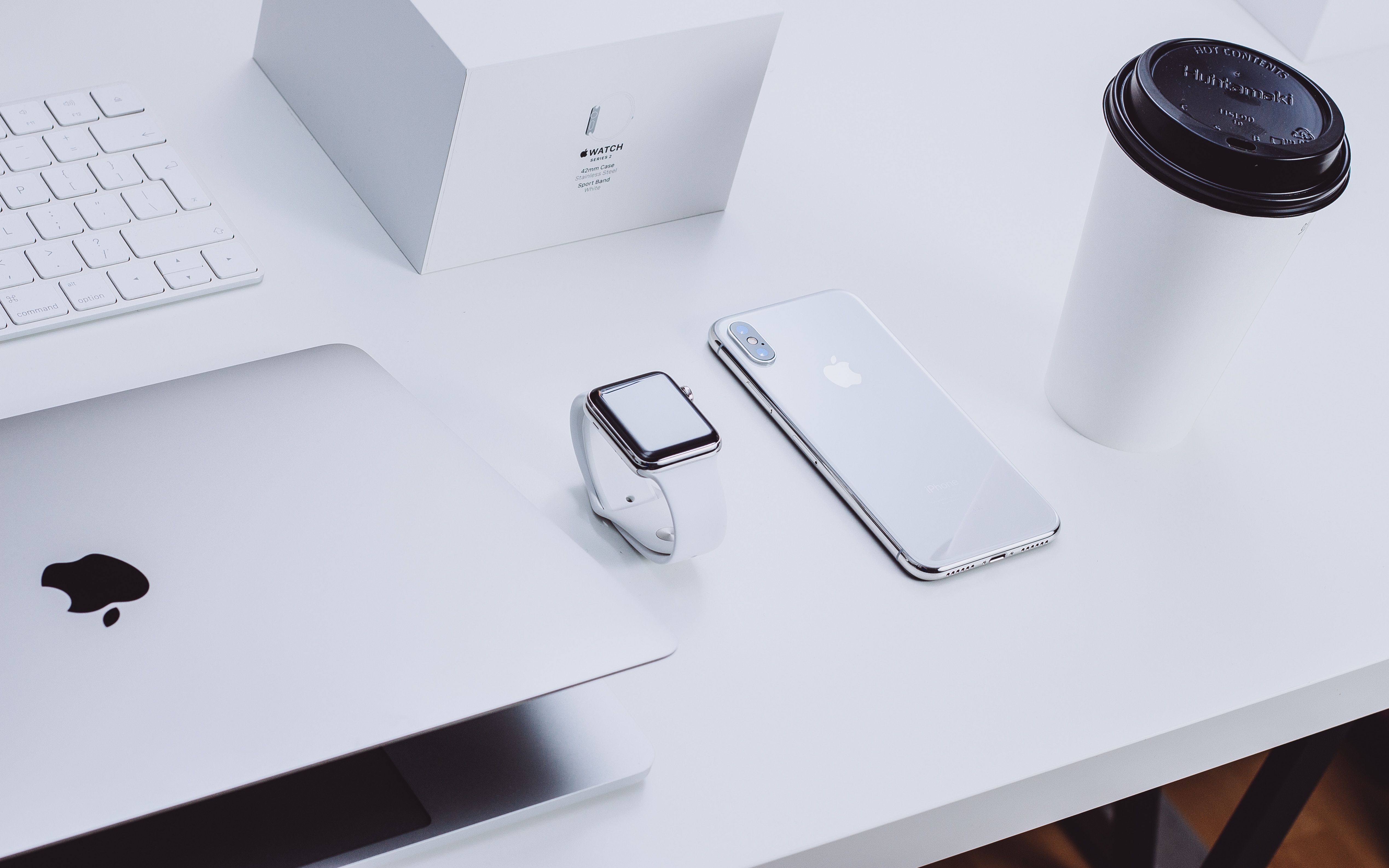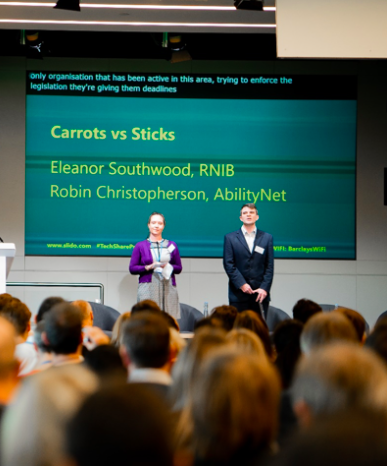On 11 December 2008, the World Wide Web Consortium (W3C) published an important update to their guidelines aimed at making the internet a more accessible place for people with disabilities. Ten years on and we’ve not seen much of an impact. Let’s look at why and what can be done to speed things up.
Accessibility for a Web2.0 world
 Remember that phrase; ‘Web2.0’? It was coined to encapsulate the fact that websites had largely changed from being static pages of information to web applications full of functionality. Web pages were becoming complicated things full of JavaScript and (ugh) Flash and the internet was becoming an increasingly ‘no-go zone’ for people with a wide range of impairments. Not using a mouse on our new, sexy AJAX web application? Tough. Distracted by that constantly updating carousel full of animated ads? Our bad, but we’re still not going to allow you to stop that scrolling. Want to make changes to text size or colours in our new Flash-based website? Sorry – move on.
Remember that phrase; ‘Web2.0’? It was coined to encapsulate the fact that websites had largely changed from being static pages of information to web applications full of functionality. Web pages were becoming complicated things full of JavaScript and (ugh) Flash and the internet was becoming an increasingly ‘no-go zone’ for people with a wide range of impairments. Not using a mouse on our new, sexy AJAX web application? Tough. Distracted by that constantly updating carousel full of animated ads? Our bad, but we’re still not going to allow you to stop that scrolling. Want to make changes to text size or colours in our new Flash-based website? Sorry – move on.
The W3C press release at the time highlighted how the update to the accessibility guidelines (known as WCAG2.0) assisted in making the new wave of websites inclusive and, as it happens, easier to use by everyone. This latter fact should be obvious to anyone – make something easier to use for people that need extreme usability and you’ll make it better all-round. I should also mention at this juncture that following these same guidelines make a website more findable through search engines, quicker to download, more easily updated/refreshed, more screen size independent and more future-proof. Like I say; better all-round.
Less than 10% take-up
“So why,” I hear you cry, “aren’t more websites following these guidelines if they’re such hotcakes?” (or words to that effect). The answer boils down to effort and commitment – or lack thereof.
Today, organisations are well aware that it not only makes strong business sense to make their websites (and mobile apps, digital marketing campaigns and customer communications) inclusive to as many users as possible, and they almost certainly know that it’s a legal requirement under the Equality Act, but checking against the guidelines and making the necessary changes as a routine part of the development and testing process takes a little extra effort, as well as an on-going commitment to embed these additional steps into workflows. How much more? An estimated 2-5% if it’s done as a routine part of build and maintenance – which is far outweighed by the savings and extra business it brings.
So inclusive design is a no-brainer, most would argue. Oh, and it’s just the right thing to do too. I think you’d be hard-pushed to find anyone who would disagree.
 If you want a shining example of a successful business, with an eagle-eye on the bottom line, who have embraced accessibility in everything they do then you need look no further than Apple. Thank you Apple for doing the right thing by tens of millions of disabled customers around the world. Oh and for the record, I’d also like to thank Apple for their refusal to support Flash on iOS. This one single decision ultimately spelt the demise of one of the most challenging aspects of the Web2.0 world.
If you want a shining example of a successful business, with an eagle-eye on the bottom line, who have embraced accessibility in everything they do then you need look no further than Apple. Thank you Apple for doing the right thing by tens of millions of disabled customers around the world. Oh and for the record, I’d also like to thank Apple for their refusal to support Flash on iOS. This one single decision ultimately spelt the demise of one of the most challenging aspects of the Web2.0 world.
Forcing sites to get fit
We’re coming up to another anniversary – the annual celebration of a new year with all it’s fresh potential. Many of us make new year’s resolutions such as losing weight or getting fit. Embracing accessibility is a lot like getting fit – there’s on-going effort involved but you know in your heart that it’s important and worthwhile and that the benefits will ultimately outweigh the effort.
Wouldn’t it be great if there was some external influence encouraging you to take those first invaluable steps towards that better, healthier place? Many of us will virtually compete with friends or colleagues to give us that extra little incentive. Some of us may even pay to have someone shout at us and force us to get fit. The point is that it’s often necessary to employ sticks as well as carrots to help us overcome our natural state of inertia and get some momentum going.
When it comes to websites the stick, in the form of the Equality Act, has been all but invisible. It’s more of a limp twig. In the ten year lifespan of the above excellent accessibility guidelines and the nearly nine years in which it’s been a legal requirement to proactively address the inaccessibility of all your digital services, we’re still in single digit percentages of websites actually achieving compliance. The fear of the limp twig of legislation hasn’t provided that extra bit of motivation that companies obviously need to get with the programme and begin to feel the benefits.
 At our recent sell-out tech conference; Techshare Pro organisations including Apple, Google and Barclays spoke about the importance of getting with the programme. However, the day was kicked off with a keynote; ‘Carrots vs Sticks’ by Ellie Southwood (of the RNIB, co-organisers of the event) and myself in which we highlighted the on-going need for the legal stick to be strengthened to successfully support the very juicy carrots we’d be hearing about throughout the day. Whilst Apple, Google and Barclays are on-board, many companies are still lounging around on their collective couches - and the internet’s a place that’s unfit for many millions of users as a result.
At our recent sell-out tech conference; Techshare Pro organisations including Apple, Google and Barclays spoke about the importance of getting with the programme. However, the day was kicked off with a keynote; ‘Carrots vs Sticks’ by Ellie Southwood (of the RNIB, co-organisers of the event) and myself in which we highlighted the on-going need for the legal stick to be strengthened to successfully support the very juicy carrots we’d be hearing about throughout the day. Whilst Apple, Google and Barclays are on-board, many companies are still lounging around on their collective couches - and the internet’s a place that’s unfit for many millions of users as a result.
Whilst governments of other countries such as Norway see it as their responsibility to enforce the law (fining companies up to €15,000 a day after a deadline is passed), our own government is yet to pick up the legal stick and start to make our legislation fit for purpose.
So, despite an open letter to our government written over three years ago in which we make this same plea for enforcement, and despite their recently identifying the EHRC as the government body responsible for monitoring and reporting inaccessible websites, they still have no plans to do anything about enforcement as far as we’re aware.
The next 10 years of accessibility
 So the guidelines that help companies achieve inclusive, flexible and functional websites that are better for everyone are ten years old this month. Happy Birthday WCAG2.0!
So the guidelines that help companies achieve inclusive, flexible and functional websites that are better for everyone are ten years old this month. Happy Birthday WCAG2.0!
Looking ahead, it would be fantastic to think that the next ten years might bring a real increase in companies embracing these guidelines and building websites and mobile apps that don’t exclude many and are better for everyone. Unless the government joins the party, however, I’m not sure whether this will be the case. Let’s let them get Brexit out of the way (and that might take longer than anyone thought) but not lose sight of the fact that we need this to happen – and the sooner the better.
So Merry Christmas everyone and a very Happy New Year. May you keep all your resolutions – especially if they relate to embracing inclusive design and getting the accessibility agenda off to a really good start in 2019.
Related articles:
6 quick checks for website accessibility
Government identifies body to enforce website accessibility - now will they step up to the task?
Open letter to government: Please ensure websites and apps comply with legal accessibility requirements
